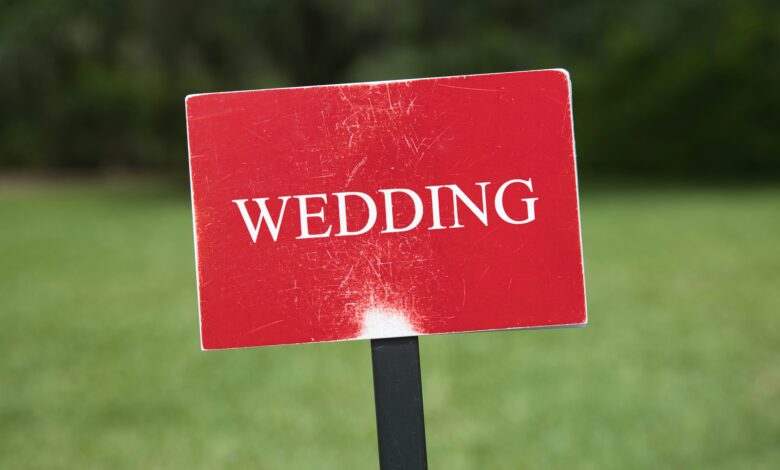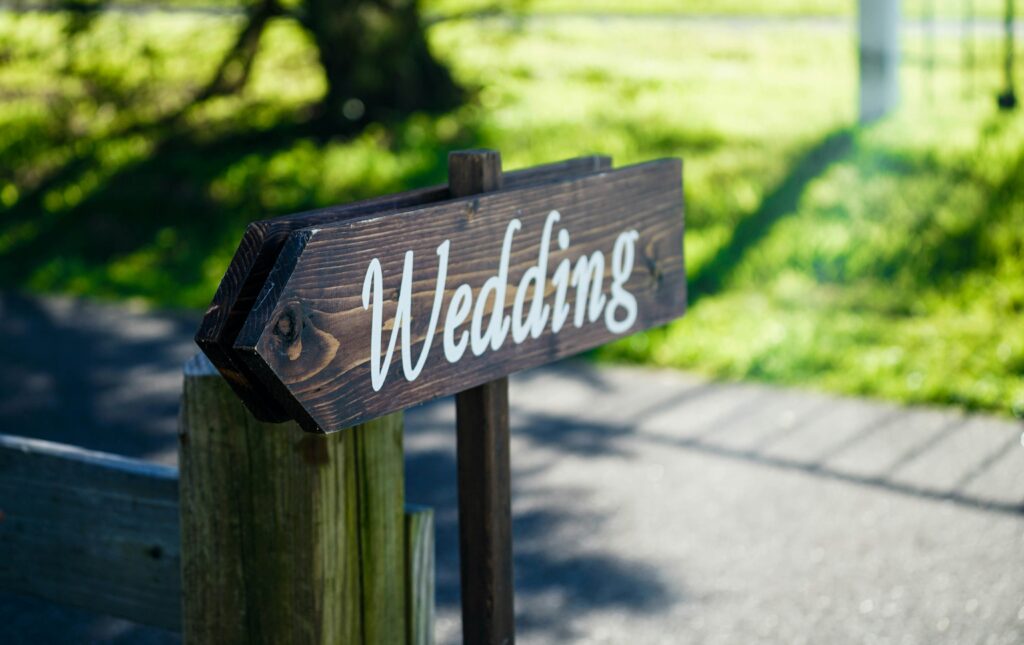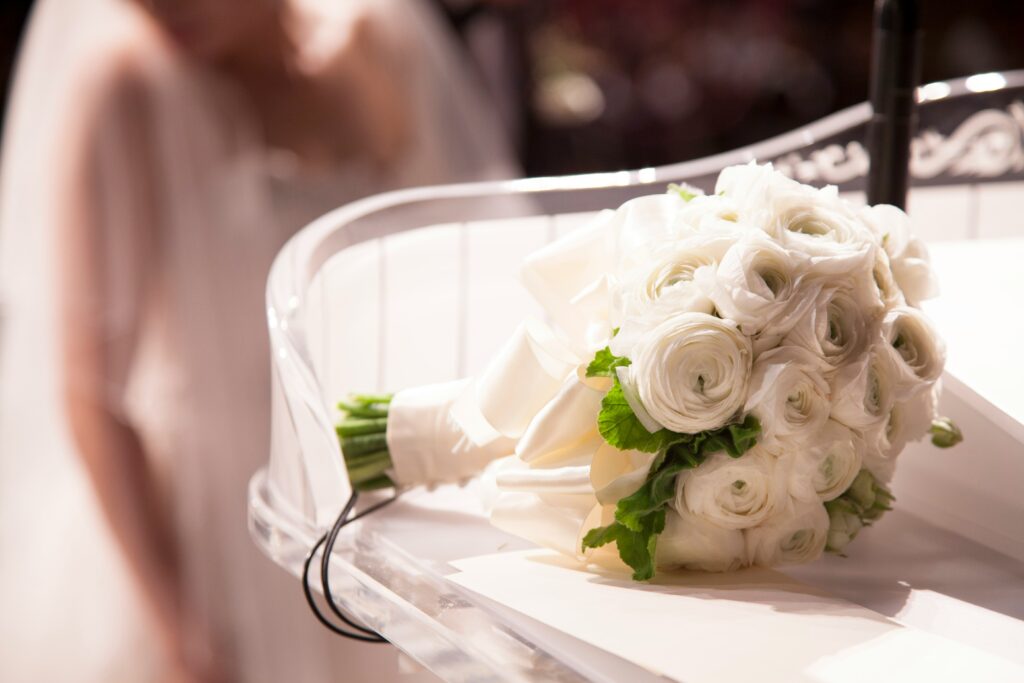24 Little Known Ways To Cut Wedding Costs

Look, I get it. You’re scrolling through Pinterest at 2 AM, staring at those dreamy wedding pics, and suddenly your heart drops when you see the price tags. $30,000? $50,000? Are they serious?
Here’s what nobody tells you: you can have an incredible wedding without draining your bank account dry. I’ve been in the personal finance trenches long enough to know that starting your marriage with massive debt is like trying to run a marathon with ankle weights. Not smart.
When I talk to couples about wedding budgets, their eyes glaze over. But here’s the thing cutting wedding costs isn’t about looking cheap. It’s about being financially intelligent. IMO, spending wisely on your wedding day shows more maturity than blowing through your savings to impress people who’ll forget what they ate for dessert by next week.
Ready to learn how to throw an amazing celebration without the financial hangover? Let’s talk real strategies that actually work.
24 Ways To Cut Wedding Costs Without Looking Cheap
Smart couples understand something crucial: your wedding budget impacts your first year of marriage. Think about it. Would you rather start married life house-hunting and building emergency funds, or stressed about wedding debt payments? Yeah, thought so.

1. Skip The Unnecessary Florals
Flowers are beautiful. Nobody’s arguing that. But do you really need arrangements on every single surface?
Here’s what happens with wedding florals: vendors see the word “wedding” and prices magically triple. That centerpiece that costs $40 for a birthday party? Suddenly it’s $120 for a wedding. Same flowers, same work, different invoice.
I’ve seen couples spend $3,000-$5,000 on florals that guests literally don’t remember. Think about the last wedding you attended. Can you describe the floral arrangements? Exactly.
Try this instead: focus florals where they matter your bouquet, maybe the ceremony altar, done. Your venue likely has architectural beauty already. Let it shine. Your Instagram photos will look just as gorgeous, I promise.
2. Pass On The Drone
Aerial shots look cool, right? But let’s do some quick math here.
Drone rental and operator: $500-$1,500. That’s money that could cover your honeymoon flights. Or three months of groceries. Or here’s a wild idea the start of your house down payment fund.
Plus, many venues have drone restrictions. Imagine paying for something you can’t even use. :/ And honestly? Your ground-level photos will be stunning if you’ve hired a decent photographer. Nobody’s printing those aerial shots anyway they get lost in the digital cloud within weeks.
Unless you’re getting married on a mountaintop or a vineyard that looks different from above, skip it. Your wedding video will be beautiful without pretending you’re filming a Hollywood production.
3. Skip The Raw Footage
Videographers love offering “raw footage packages.” Sounds professional, sounds important. But let’s break down what you’re actually buying.
Raw footage is just unedited clips hours of people adjusting their ties, someone’s awkward small talk, the officiant clearing their throat twelve times. You’re essentially paying $300-$800 for content you’ll never watch.
Your videographer already captures everything during the shoot. They edit down to the good stuff the tears, the laughter, the kiss, the dance. That’s what you’ll actually want to rewatch on anniversaries.
From a financial planning perspective, this is textbook “perceived value” spending. You think you need it because it sounds comprehensive. But the return on investment? Pretty much zero. Save that money for something with actual utility.
4. Check Steak Alternatives On The Menu
Wedding catering charges premium prices for premium cuts. But here’s an insider secret from years of reviewing wedding budgets: protein choice can swing your per-plate cost by $15-$25.
Filet mignon sounds fancy. It also costs $45-$60 per person. Meanwhile, braised short ribs? Equally delicious, totally elegant, and runs $25-$35 per person. That’s a $1,500-$2,500 savings for 100 guests.
Think about other options too:
- Chicken supreme done right looks restaurant-quality and costs $18-$25/plate
- Pork tenderloin is tender, flavorful, and budget-friendly
- Seasonal fish often beats steak in both taste and price
Your guests want good food, not necessarily expensive food. I’ve been to weddings with steak that tasted like shoe leather, and weddings with herb-roasted chicken that had people asking for seconds. Quality of preparation matters way more than the protein itself.
5. Use The Standard Invitation Size
This one’s sneaky most couples have no idea they’re overpaying.
Non-standard invitation sizes cost more to mail. Square invites? Additional postage. Oversized invites? Extra postage. That cute 7×7 design you fell in love with? It’ll cost you an extra $0.20-$0.40 per invite to mail.
Multiply that by 150 invitations, and you’ve just spent an extra $30-$60 on postage alone. Plus, non-standard sizes often cost more to print.
Stick with 5×7 inches it’s the goldilocks size. Fits standard envelopes, qualifies for regular postage, and still looks beautiful. You can make it stunning with design choices rather than weird dimensions.
Better yet, consider digital save-the-dates. Free, instant, eco-friendly, and you can track who opened them. FYI, we’re living in 2025 people check their phones way more than their mailboxes anyway.
6. Consider Vintage Items
Want to know a secret? Vintage wedding items aren’t just cheaper they’re cooler.
Your grandmother’s pearl earrings carry more emotional weight than anything you’ll find at a jewelry store. Your mom’s lace veil has a story. These pieces make your wedding personal in ways money can’t buy.
But beyond sentimentality, there’s serious savings here:
- Vintage brooches for bouquets: $0 (borrowed) vs. $50-$150 (purchased)
- Antique serving pieces for dessert table: $0 vs. $200+ in rentals
- Family heirloom jewelry: $0 vs. $500-$2,000 for new accessories
I’ve helped couples budget weddings that incorporated family treasures, and not only did they save money their weddings felt more meaningful. Plus, older family members love seeing their items used. It’s a win across the board.
7. Cut The Guest List
Okay, this one stings. But it’s also the single biggest cost-cutter available.
Every guest costs approximately $150-$300 when you factor in food, drinks, rentals, favors, and invitations. That distant cousin you haven’t seen in eight years? That’s $300. Your mom’s coworker who you met twice? Another $300.
Do the math: Cutting 30 guests = $4,500-$9,000 in savings. That’s not pocket change. That’s a down payment contribution. That’s a fully-funded emergency fund. That’s six months of student loan payments.
Here’s how to think about it: Will this person be in your life in five years? If the answer isn’t an immediate “yes,” they don’t need to be at your wedding. Your wedding isn’t a networking event or a family reunion obligation.
Keep it intimate, keep it meaningful, and watch your budget breathe easier.
8. Skip Save-The-Dates
Hot take: save-the-dates are mostly unnecessary in the digital age.
You’re already texting your inner circle the date. You’re probably posting engagement photos that mention it. The people who matter already know when you’re getting married.
Physical save-the-dates run $1.50-$4.00 each after printing and postage. For 150 guests, that’s $225-$600 before you’ve even sent actual invitations.
Better approach: Create a free wedding website using platforms like The Knot or Zola. Send a quick email or text with the link. Done. Free. Efficient. Environmentally friendly. Plus, people can check details anytime without digging through their mail pile.
If you absolutely must send something physical, go with postcards they’re cheaper to print and mail. But honestly? In 2025, skip them entirely.
9. Considering Specialty Cocktails
Full open bars sound impressive until you see the bill: $3,000-$8,000 for 100 guests. Yeah.
Here’s the financially smart alternative: Create 2-3 signature cocktails that match your wedding theme, then offer beer and wine. Your costs drop to $1,500-$3,000 for the same guest count.
Why does this work?
- Limited choices mean less inventory waste
- Bartenders work faster with a focused menu
- Specialty cocktails feel personal and curated
I’ve attended weddings with full bars where I drank the same whiskey sour all night, and weddings with signature drinks that people still talk about years later. The limitation actually creates a better experience while cutting costs in half.
Pro tip: Work with your bartender to create cocktails using affordable base spirits. Nobody needs Grey Goose when Tito’s tastes nearly identical.
10. Don’t Hire Two Shooters
Wedding photographers love selling “second shooter packages.” And sure, for a 300-person wedding at multiple locations, fine. But for most weddings?
One skilled photographer is plenty. They can cover getting ready shots, ceremony, cocktail hour, and reception. The idea that you’ll miss crucial moments without two photographers is mostly vendor marketing.
Here’s the cost breakdown:
- Single photographer: $2,000-$4,000
- Two-shooter package: $3,500-$6,500
That’s $1,500-$2,500 you’re spending on redundancy. From a financial efficiency standpoint, you’re paying 40-60% more for maybe 15% more coverage, a coverage you might not even use.
Look at photographer portfolios. If their solo work shows comprehensive coverage of weddings similar to yours, save the money. Invest in a better album design or more print copies instead.
11. Forgo Top-Shelf Liquor
Real talk: Your guests can’t tell the difference between mid-shelf and top-shelf liquor once it’s mixed.
After ice, mixers, and fruit garnishes, that Belvedere vodka tastes the same as Smirnoff. The Patron margarita looks identical to the one made with Espolòn. But the price difference? $3-$6 per drink.
For 100 guests averaging 3 drinks each, switching from top-shelf to mid-shelf saves $900-$1,800. That’s real money for the same tipsy dancing.
Here’s what actually matters for bar quality:
- Fresh mixers and garnishes
- Proper ice and glassware
- Competent bartenders who know ratios
Stock your bar with solid mid-range brands. Your guests will have fun, nobody will complain, and your bar bill won’t induce panic attacks. Ever wonder why wedding bars charge so much? It’s because couples overspend on premium bottles that sit mostly full at the end of the night.
12. Cut Transportation Costs
Shuttles sound helpful, but venue-to-venue transportation runs $500-$2,000 depending on guest count and distance. That’s money walking right out of your budget.
Alternative strategies:
- Choose venues where ceremony and reception share space (more on this later)
- Select venues near hotels so guests can walk or rideshare
- Have a gap between ceremony and reception so guests can drive themselves
From a cost-benefit analysis perspective, you’re spending significant money on convenience that guests can easily handle themselves. Adults can navigate from point A to point B especially when there’s a wedding website with directions.
The exceptions? If you’re having elderly guests who shouldn’t drive, or if your venue is genuinely remote. Otherwise, let this line item go and put that money toward something guests will actually remember.
13. Ditch The Escort Cards
Escort cards look pretty. I’ll give them that. But at $2-$5 per card for 100 guests, you’re spending $200-$500 on pieces of paper people glance at for five seconds.
Here’s the financially smarter approach: Create one large seating chart on an easel or display. It serves the same function, looks elegant, and costs $50-$150 total.
Or go even simpler open seating. Let guests sit where they want. Weddings are social events anyway. People like choosing their spots, especially if they spot friends from different parts of your life.
Think about the ROI here: $300 spent on escort cards could instead buy:
- Professional cake cutting and serving ($150-$200)
- Upgraded appetizer options ($200-$300)
- Better welcome drinks ($250-$350)
Which creates more value for your guests? Exactly.
14. Lose The Linens
Specialty linens are beautiful. They’re also wildly overpriced.
Basic tablecloth rental: $8-$15 per table
Specialty linens (velvet, sequined, patterned): $35-$75 per table
For 15 tables, that’s $500-$1,000 spent on table covers. Covers that literally end up under plates and centerpieces anyway.
Smart alternatives:
- Use the venue’s standard linens if they’re decent quality
- Invest in table runners only ($100-$200 total) to add personality
- Choose venues with beautiful bare tables (farmhouse wood, marble, etc.)
I once reviewed a wedding budget where the couple spent $1,200 on specialty linens. When I showed them photos from their actual wedding, you could barely see the linens under all the place settings and decorations. They essentially paid $1,200 for background texture. Don’t make that mistake.
15. Consider Minimalist Bridesmaids’ Bouquet
Traditional bridesmaids’ bouquets run $75-$150 each. For a bridal party of five, that’s $375-$750 on flowers that get tossed aside during cocktail hour.
Minimalist alternative: Single-stem flowers or small clusters of 2-3 blooms. Cost? $20-$40 per bouquet. That’s an $800 saving for a six-person bridal party.
The minimalist look is actually trending right now it photographs beautifully and looks intentionally chic rather than budget-conscious. Win-win.
Other options:
- Greenery-only bouquets with eucalyptus or olive branches ($15-$25 each)
- Non-floral bouquets using silk flowers you keep forever ($30-$50 one-time cost)
- Bridesmaids carry lanterns or nothing (some traditions don’t require bouquets at all)
Your bridesmaids don’t care about bouquet size. They care about being part of your day. Redirect that floral budget toward better bridesmaid gifts instead.
16. Ditch The Envelope Liners
Envelope liners are decorative tissue inside invitation envelopes. They’re also completely unnecessary.
Cost per invitation with liners: $0.50-$1.50 extra
For 150 invitations: $75-$225 added cost
That’s money spent on something your guests literally throw away. They open the envelope, pull out the invitation, and toss the envelope liner and all straight into recycling.
If you want colorful envelopes, buy colored envelopes directly from paper suppliers. Colored envelopes cost about the same as white, but skip the added liner expense.
From a behavioral finance perspective, envelope liners exploit the “completion effect” you feel your invitation isn’t “complete” without them. It is complete. Your invitation contains the information guests need. Everything else is decoration that costs money for zero functional return.
17. Consider Other Days Of The Week
Saturday weddings are premium-priced. Venues know everyone wants Saturdays, so Saturday rates run 20-50% higher than weekday rates.
Typical venue pricing:
- Saturday: $5,000-$8,000
- Friday: $3,500-$6,000
- Sunday: $3,000-$5,000
- Thursday: $2,500-$4,000
For the same venue with identical services, choosing Friday or Sunday saves $1,500-$3,000. Thursday or Wednesday? Even more savings.
“But will people come?” Most of your important people will adjust their schedules. Your true inner circle will take the day off work. Those who can’t make it probably wouldn’t have been high priorities anyway.
I’ve attended weekday weddings where attendance was slightly lower but intimacy was higher. The couple saved thousands and still had everyone who mattered. Worth considering, right?
18. Explore Venue Options
Not all venues charge equally, even within the same city.
Country clubs and hotels: Premium pricing ($8,000-$15,000)
Restaurants with event space: Mid-range ($3,000-$7,000)
Community centers or parks: Budget-friendly ($500-$2,500)
The facility doesn’t make the wedding memorable the people and celebration do. I’ve been to gorgeous weddings in community gardens that cost a fraction of ballroom prices.
When exploring venues, ask:
- What’s included in the base price?
- Are tables, chairs, and basic equipment included?
- Can we bring our own caterer/alcohol?
- Are there hidden fees (cleanup, overtime, security)?
Pro move: Check out museums, galleries, or historic buildings. Many rent their spaces for events at competitive rates and come with built-in ambiance. You’ll need minimal decoration, which saves more money.
19. DIY Music Playlist
DJ costs: $1,000-$3,000
Your laptop + good speakers: $0 (you already own them)
Creating your own playlist saves major money while giving you complete control over the music vibe. Plus, it’s way more personal these are your songs, your memories.
Platforms like Spotify let you create collaborative playlists where guests can add requests ahead of time. Set up multiple playlists:
- Cocktail hour: upbeat but conversational
- Dinner: mellow background music
- Dancing: your ultimate party songs
Designate a tech-savvy friend to manage the playlist during the event. Rent quality speakers ($100-$200) if your venue doesn’t provide them. Total cost: maybe $200 versus $2,000+. That’s $1,800 in your pocket.
The only downside? No MC for announcements. But honestly? Your venue coordinator can handle that, or you can use a microphone to make announcements yourself. It’s your wedding own it!
20. Consider A Second-Hand Dress
Wedding dresses are marked up like crazy. You’re paying for the “wedding” label, not just fabric and construction.
New designer gowns: $2,000-$5,000
Second-hand identical gowns: $500-$1,500
That’s a $1,500-$3,500 difference for a dress you’ll wear once. From a pure financial ROI standpoint, this doesn’t compute.
Where to find second-hand wedding dresses:
- Stillwhite: Online marketplace for pre-owned wedding dresses
- Nearly Newlywed: Consignment shops for designer gowns
- Local consignment stores: Often have wedding sections
- Sample sales: Brand new dresses at 50-70% off
Many second-hand dresses have literally been worn once for 6-8 hours then professionally cleaned. They’re essentially new. You can use the savings to pay for alterations to make the dress fit perfectly.
If you’re environmentally conscious, this also reduces waste. Win for your wallet, win for the planet.
21. Get Help From Friends And Families
People want to help. Seriously. But you have to actually ask.
Here’s what happens: Your loved ones would happily contribute but don’t want to seem presumptuous by offering. Meanwhile, you’re stressing about costs but don’t want to burden anyone by asking. So everybody stays quiet while you overspend.
Break this cycle. Have honest conversations.
Ways family and friends can help:
- Aunt who’s a baker: Can she make the dessert table treats?
- Friend who’s a photographer hobbyist: Can they do engagement photos?
- Dad who’s handy: Can he build the wedding arch?
- Cousin who’s artistic: Can they hand-letter signage?
You’re not being a mooch you’re letting people participate meaningfully in your celebration. Most people prefer contributing skills or time over buying random registry items anyway.
When my cousin got married, six family members chipped in different ways. They saved over $4,000 total, and everyone felt more invested in the wedding’s success. That’s genuine community support.
22. Ceremony And Reception At One Location
Transportation between venues: $500-$2,000
Double setup/breakdown: Added vendor costs
Guest confusion and delays: Priceless (but annoying)
Using one location eliminates all of this.
Additional benefits:
- Repurpose ceremony flowers for reception tables (more on this next)
- Guests don’t get lost or arrive late to reception
- No gap time stress wondering what guests will do between events
- Vendors charge less for single-location service
Many venues offer ceremony and reception packages that cost less than renting each space separately. The convenience premium actually works in your favor for once.
This is basic logistical efficiency. Why pay to move people and things around when you can accomplish everything in one place? Your wedding isn’t a city tour keep it streamlined.
23. Repurpose Ceremony Decor
You paid for those beautiful ceremony flowers and decorations. Use them twice.
Ceremony florals: $500-$1,500
Reception florals: $800-$2,000
Total if separate: $1,300-$3,500
Repurposing strategy: Move ceremony arrangements to reception tables, the gift table, or the bar area during cocktail hour. Total cost: Same flowers, one purchase, $800-$2,000 saved.
Work with your florist or coordinator during planning. Tell them explicitly: “I want to reuse ceremony decor at the reception.” They’ll design arrangements that work in multiple locations.
Other repurposing ideas:
- Ceremony aisle petals: scatter on reception tables
- Ceremony chairs: use for reception seating
- Ceremony signage: move to reception entrance
You’re maximizing every dollar spent. That’s smart wedding budgeting, and nobody will notice the flowers “moved” they’ll just see beautiful decorations all day.
24. Embrace DIY Projects
DIY projects save money if you’re realistic about your skills and time.
What works for DIY:
- Invitations: Use Canva templates ($0-$30)
- Signage: Hand-lettered or printed ($20-$50)
- Favors: Homemade treats or small crafts ($50-$150)
- Centerpieces: If you’re crafty ($100-$300)
What to avoid DIYing:
- Your wedding cake: Food safety and stress aren’t worth it
- Photography: You can’t redo this if it goes wrong
- Hair and makeup: You want to look good and feel confident
The key is knowing your limits. DIY saves money only if you can execute well and have time to do it without stressing yourself out before the wedding.
I’ve seen couples spend $200 on craft supplies for DIY centerpieces that looked homemade (not in a good way) when florist options would’ve cost $300. The $100 saving wasn’t worth the aesthetic compromise. Choose your DIY battles carefully.
Time management tip: Start DIY projects 3-6 months before the wedding, not the week before. Rushed DIY looks rushed. Planned DIY looks intentional.
Final Thoughts
Your wedding should celebrate your love, not create financial stress. Smart couples prioritize meaningful choices over costly extras, avoiding debt and protecting their future. Every dollar saved can go toward an emergency fund, home, retirement, debt repayment, or a better honeymoon.
Focus on what truly matters, plan within your means, and start your marriage on a strong financial foundation. Even implementing a few smart strategies can save thousands celebrate well without compromising your future.


